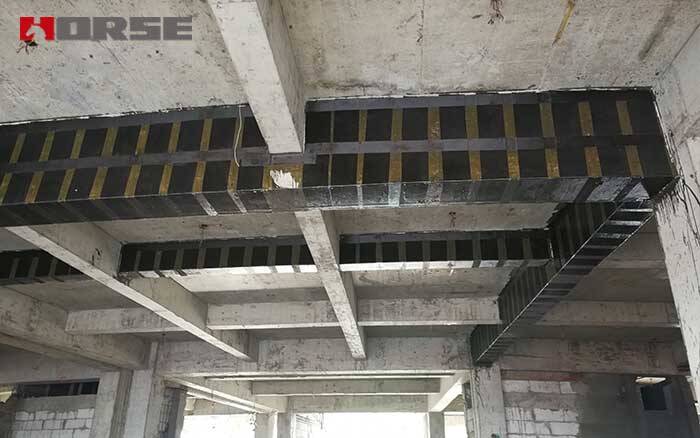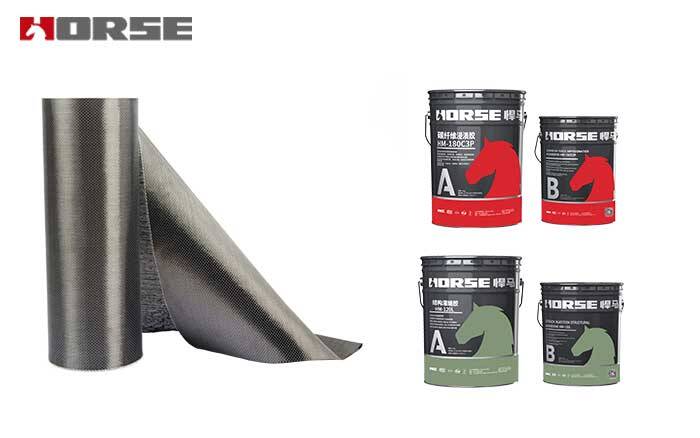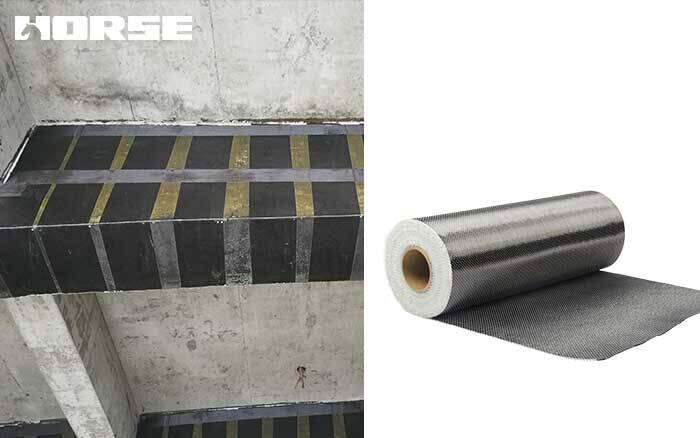Crack beam repair
carbon fiber reinforced polymer
Carbon fiber fabric can effectively solve the problem of poor construction quality of current reinforced concrete projects. After being reinforced by carbon fiber cloth, the safety and durability of the structure are improved.

Project Overview
The project is an 18-story frame shear wall structure. There are 6 frame beams on the 7th and 8th floors. There are serious construction quality problems. The beam cross-sectional size is 200mm X 700mm and the beam length is 8000mm. The problems in the field inspection are as follows:
(1) There are many honeycombs on the surface and there are multiple temperature shrinkage cracks;
(2) The original designed concrete strength is C30, and the actual measured concrete strength is between C20-C30;
(3) The lower part of individual beams has exposed ribs.
This project affects the strength of components due to poor construction quality. Since the owner has high requirements for the use of space and the appearance after reinforcement, and the construction period is required to be fast to reduce the negative impact, the options are compared as follows after a variety of options. Carry out chemical grouting treatment for the cracks of the frame beams, and paste carbon fiber cloth on the bottom and sides of the beams to improve the bending and shear bearing capacity of the frame beams.
Structural strengthening materials: Horse unidirectional carbon fiber 300g, HM-180C3P carbon fiber adhesive and Horse crack injection.

Calculation method
The beam concrete is calculated according to C20. After reviewing the building conditions, the beam bending capacity needs to be increased by 15%. A layer of 300-width carbon fiber cloth is pasted along the length of the beam bottom to increase the beam bending capacity by 20% and meet the design requirements. The beam's shear design refers to the relevant Japanese design method. According to the actual situation of the beam, a 250 mm wide u-shaped carbon fiber hoop (intermediate moment 600 mm) is pasted on both sides of the beam, and a 200 mm wide bead is anchored outside the U-shaped hoop. After calculation, the reinforcement can meet the design requirements of the beam's shear capacity.

The process of carbon fiber reinforcement
Step 1: first treat the frame beams with grass roots to remove the poor and loose parts of the concrete surface. Use the angle grinder to repeatedly grind the carbon fiber parts to remove impurities on the surface, and smooth the raised parts, blow off the dust attached to the surface with a blower, and finally wipe it clean with cotton yarn.
Step 2: for the grouting treatment, the filling material is the colloid prepared by the experiment. Because of its high bonding strength, the integrity of the structure can be restored by grouting and grouting.
Step 3: After finishing the surface treatment of the concrete, brush the primer, and after the fingers dry, repair the adhesive surface with epoxy putty.
Step 4: Confirm the dryness of the putty before sticking the carbon fiber cloth. After it is completely cured, you can start sticking. First paste the bottom of the beam into three sections, and the lap is at the 1 /3 beam span. Then paste the U-shaped hoop. Finally, in order to ensure the anchoring quality of the U-shaped hoop, a 200 mm wide carbon fiber bead is stuck on the beam side.
Conclusion
The reinforcement results of this project show that carbon fiber cloth can effectively solve the problem of poor construction quality of current reinforced concrete projects. After being reinforced by carbon fiber cloth, the safety and durability of the structure are improved. Moreover, it does not require any large-scale machinery and wet work during the reinforcement construction process. The construction site is small in size and can be basically completed under normal operating conditions. Its comprehensive economic benefits are superior to bonded steel and have broad application prospects.